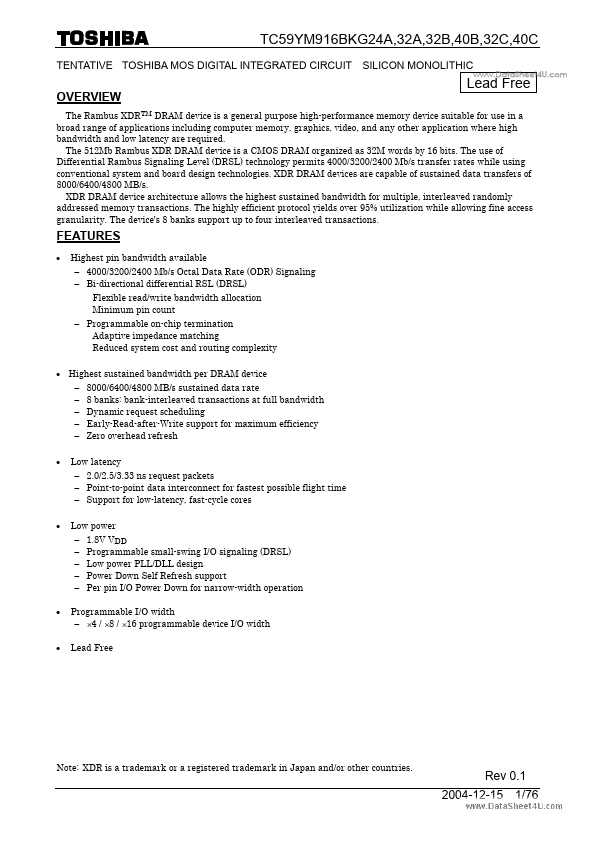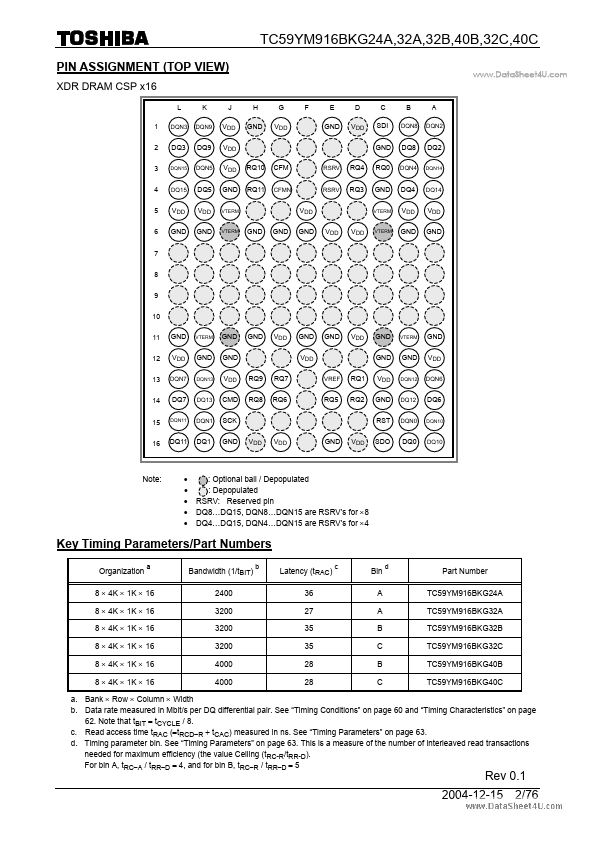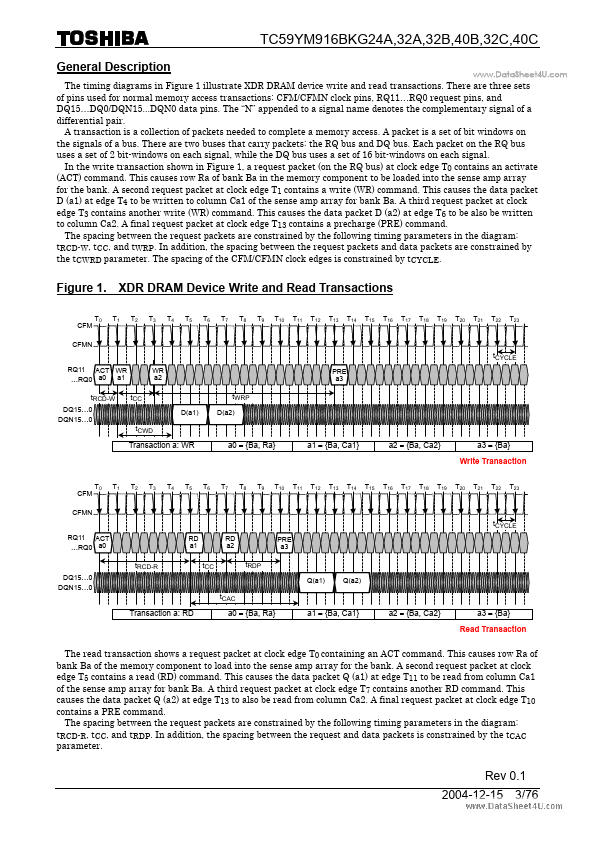Description
www.DataSheet4U.com
The timing diagrams in Figure 1 illustrate XDR DRAM device write and read transactions.There are three sets of pins used for normal memory access transactions: CFM/CFMN clock pins, RQ11…RQ0 request pins, and DQ15…DQ0/DQN15DQN0 data pins.The “N” appended to a signal name denotes the complementary signal of a differential pair.A transaction is a collection of packets needed to complete a memory access.A packet is a set of bit windows on the signals of a bus.There are two
Features
- Highest pin bandwidth available.
- 4000/3200/2400 Mb/s Octal Data Rate (ODR) Signaling.
- Bi-directional differential RSL (DRSL) Flexible read/write bandwidth allocation Minimum pin count.
- Programmable on-chip termination Adaptive impedance matching Reduced system cost and routing complexity.
- Highest sustained bandwidth per DRAM device.
- 8000/6400/4800 MB/s sustained data rate 8 banks: bank-interl.




